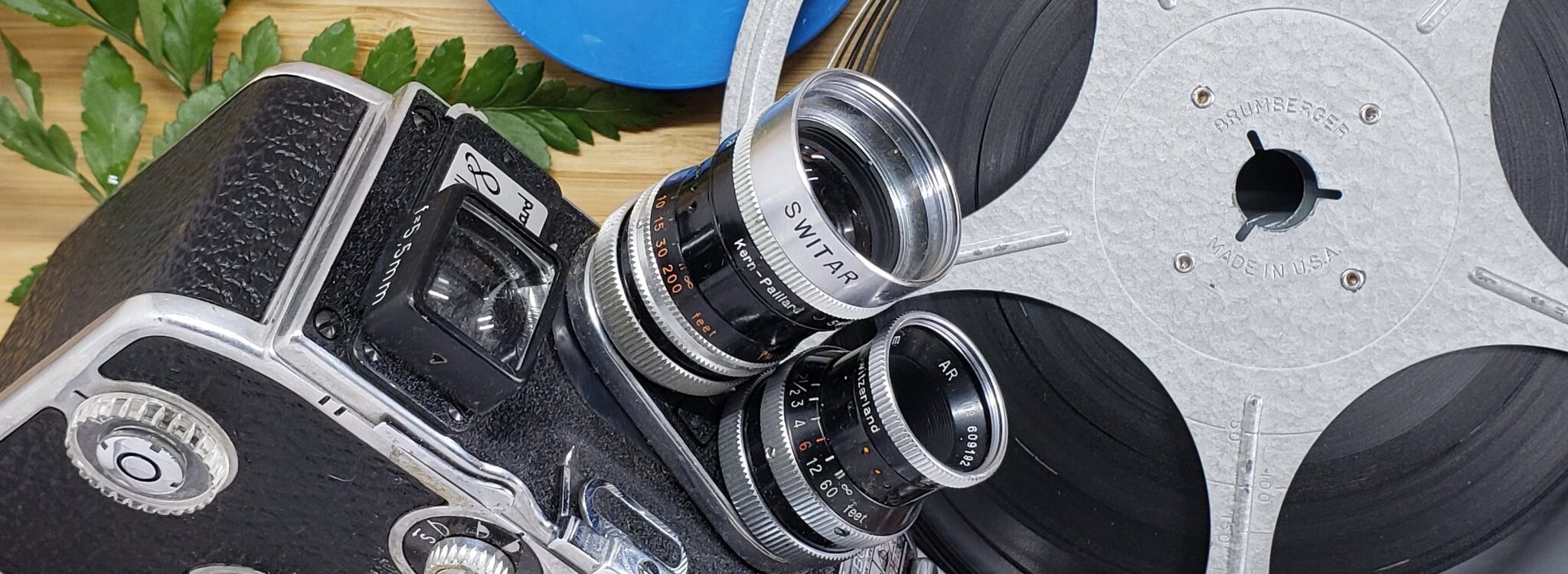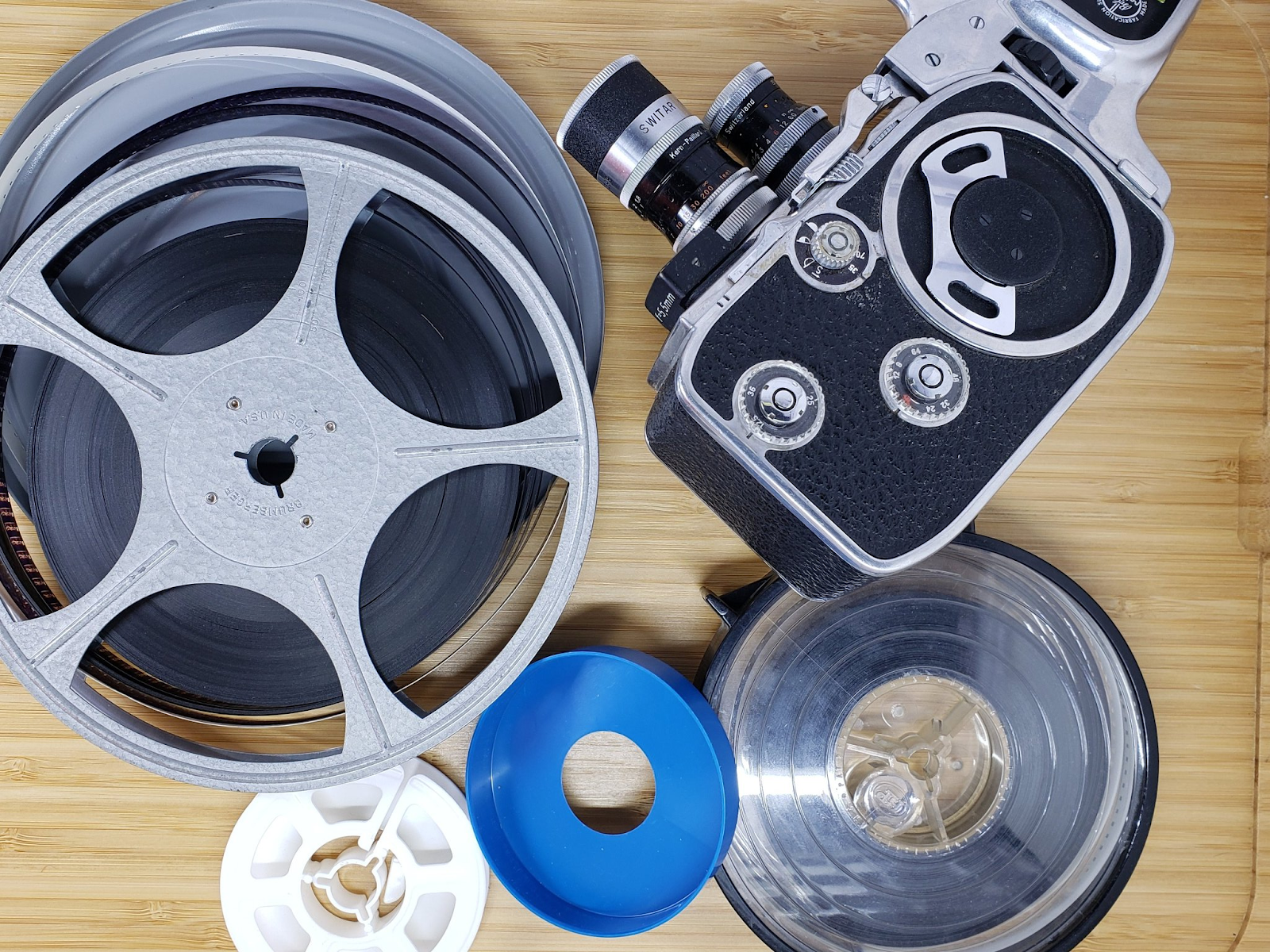Here at Pixologie Digital Solutions, our goal is to take your precious memories and give them back to you in a format that preserves( and even improves) the quality. We convert 8mm, 16mm, Super 8 Film, and more! We don’t take the easy way. We will go the extra mile to make sure your video is as beautiful as possible so it can be preserved for generations. If you’re wondering what the Pixologie Digital Solutions difference is, here are the steps we go through when you give us your film:
See the Difference
Want to see the difference? Watch this video. The clip on the left was processed the way that we normally do, the clip on the right was processed using common budget scanning methods.
Pixologie Digital Solutions Film Conversion Process:
- We assess the length of your film to see how many hours you have. We then research the age of your film to help you pinpoint when the film was taken.
- We add leads to the film. This means that we have the ability to capture every single second of your film, nothing will be left out.
- We clean all film to remove any dirt. Older film can have dust, grime, or mold, which will reduce the quality of your converted film. There’s also an issue called “emulsion bleed” where some colors bleed out of the film and make images blurry. We get your film as clean as can be, so you can be sure you have the highest possible quality video.
- We scan your film at 1080p, so you can have an HD version of your video. We also scan the entire cell, we do not crop out the tops, bottoms, or sides of the film.
- Once your film is scanned, we will provide you with a raw video file in case you want the ability to edit it again later. We realize that technology changes, so we want to make sure you have an unedited version. In a few years, there may be ways to improve the final edited quality. Film is a delicate medium, so we suggest planning to scan it only once, but retaining the full file for future use.
- Editing:
- We remove blank or static portions of the film and any blank beginnings and ends.
- We stabilize the video, so it looks less shaky.
- We correct the color on the video to make sure it is as true-to-life as possible.
- If the film was taken at a faster or slower rate, we can adjust the speed so that it is true-to-life (such as with underwater filming).
- If there are specks or “digital noise” on the film, we reduce those so you can have a clearer picture.
- We convert the edited video file into an MP4 so it is easily playable on computers, postable to social media, and watchable on smart TVs. We will return the file to you on a USB drive or an external hard drive.
- If your film is on metal reels and in metal tins, we will offer for $10 each, a safer storage option. Metal tins contribute to film deterioration because of film off-gassing and rust. These two factors can permanently and severely damage film, making it unviewable for future generations.
- We will label all of your film reels and organize them in chronological order so your memories are easier to find.
The Film Conversion Process of Big Box Stores / Mail-In Services / and Budget Scanning:
Searching online, there are a few other providers which also do reel-to-reel film scanning. While some may have low prices, the result may be of a lower-quality. Film is delicate, and something that should be scanned as few times as possible. There are many times in life where price-shopping is smart, but please think twice before doing so with your precious memories. Even if you choose a service besides Pixologie Digital Solutions, we hope you will make good long-term choice so that your history can be viewed by future generations.
They often don’t:
- Assess film age to help you determine when it was taken.
- Add extra leads (so some beginning and endings of videos may be missing).
- Convert film that is damaged or has mold. They will probably return your items without even attempting to convert them.
- Scan the entire film. Many companies zoom in to scan just the center of film so they can process it more quickly. This means that you may be missing sections on the edges of your film. Important memories could be cropped out.
- Provide the archival unedited raw file. If technology improves, delicate film will have to be scanned again.
- Edit the film to improve quality.
- Give options for safe film storage.
- Label or organize film reels.
- Provide education and 1:1 conversations to help educate you on your film.
We are a business, but our mission is to teach people about the preservation of memories and bring them back to our day-to-day lives. If you have any questions about 8mm film (or any other sizes) please reach out. We love educating and hope as much film as possible can be preserved for future generations. We want to save your history.




